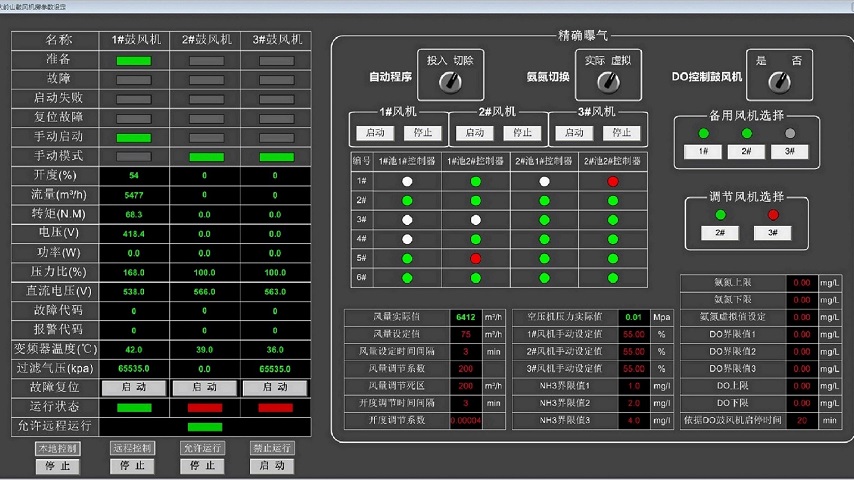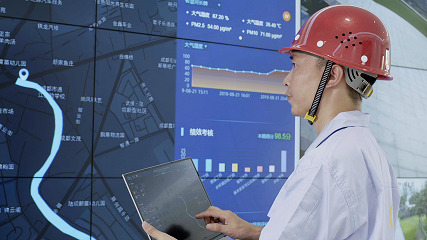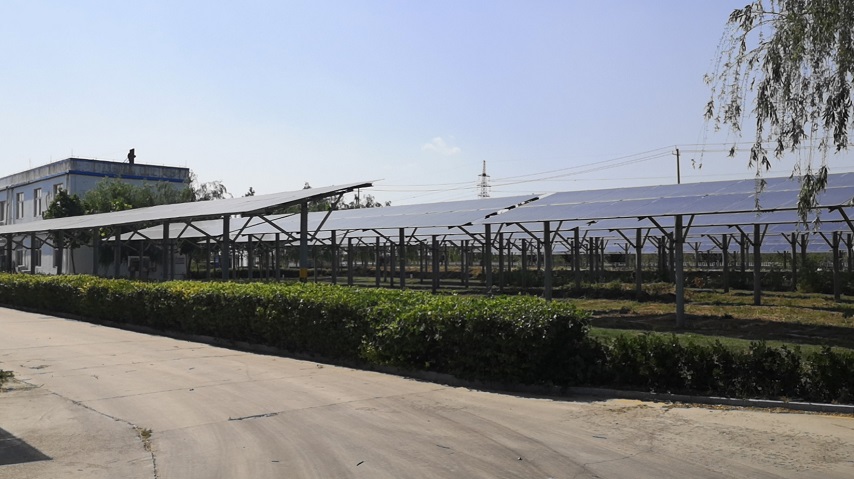BEWG has achieved continuously refined energy management by strictly abiding by the Law of the People’s Republic of China on Conserving Energy and other laws and regulations, adhering to the concept of “green and low-carbon development ”, and taking the measures of strictly monitoring and collecting energy consumption data, building an energy efficiency evaluation system, prioritizing the use of high energy efficiency equipment, setting up an incentive mechanism for energy conservation and emission reduction, promoting the use of clean energy and renewable energy, trying to establish a carbon footprint evaluation system, etc.








BEWG adheres to the concept of green construction. Emissions reduction teams for construction projects rigorously control the emission of air pollution, water pollution, noise pollution, light pollution and waste.
Preventing air pollution
- Construction waste must be hoisted in a container and not thrown in the air carelessly. It should be removed and carried away in a timely fashion. Water should be sprayed to reduce dust.
- Cement and other bulk fine powders should be sealed or covered tightly. Measures should be taken during their unloading to reduce dust.
- Makeshift roads on site should be hardened with concrete or paved with cement hexagon blocks to prevent dust.
- Dust-monitoring devices must be installed on-site. Personnel and equipment must be arranged to spray water to reduce dust. These will be supervised by a construction site supervisor.
Prevention of water pollution
- A drainage ditch should be built on-site to centralize and collect the wastewater, to avoid seepage into the ground, soil pollution and groundwater contamination.
- The site must be equipped with a sedimentation tank so wastewater can be discharged into the municipal pipeline after sedimentation.
- The warehouse where oils are stored must be treated against leakage, to prevent oil spills, dripping, seepage, leakages water pollution.
- If a temporary canteen is set up on-site, it must be equipped with a simple and effective grease trap where oil should be removed regularly to prevent pollution.
Prevention of noise pollution
- Safety and noise-avoidance construction education for workers entering the site should be carried out. A management system for controlling manmade noise should be established to reduce loud sounds as much as possible and encourage staff to prevent noise disturbing residents.
- The supervisor is required to detect noise during the construction process, strictly monitor the hours of loud operations, and avoid construction at night and break time.
- To reduce the spread of loud sound, a sealed shed for mechanical equipment should be built and a silencer installed for noisy machinery.
Prevention of light pollution
- There should be no continuous lighting on the project site. Only necessary lighting shall be used, excessive lighting should be avoided during unavoidable construction at night.
- The lighting of the construction company should be centralized and cover only the scope of the site to avoid affecting nearby traffic.
Waste management
- A temporary waste storage site should be built at the site. The waste should be classified and stored separately, with clear safety signs and preventive measures.
- The waste should not be scattered or mixed during transportation. Recyclable waste should be recycled and reused.
- Engine oil, paints, anti-corrosion material tailings and cooking performance enhancers from the chemical laboratory will be collected by classification, and entrusted to a licensed organization for treatment. The generation time, production, storage, transfer and personnel for handover for waste liquid should be recorded.
During its operation, BEWG has strictly followed the Law of the People’s Republic of China on Prevention of Environmental Pollution Caused by Solid Waste, the Water Pollution Prevention and Control Law of the People’s Republic of China, the Law of the People’s Republic of China on the Prevention and Control of Atmospheric Pollution, and various local laws and regulations on environmental protection; meanwhile, the company has also issued the Quality, Environment, Occupational Health and Safety Management Manual of BEWG, Procedure Document for Quality, Environment, Occupational Health and Safety, Methods and Measures for Key Control Nodes of Traditional Water Construction Projects, Emergency Response Plan for Production Safety Accidents of BEWG and other internal policy documents, which clearly stipulate that for the exhaust gas, waste water, hazardous and non-hazardous waste generated during operation, the company must strictly comply with relevant emission standards or transfer them to a qualified third-party organization for disposal to achieve full-cycle management of all pollutants.
Our main emissions fall into three categories:
-
Sludge generated during water production is mainly composed of dissolved substances in natural water, and agents added during the purification process.


-
Waste gas, sludge and treated sewage are generated by water treatment plants. The gas mainly comes from the sulphur dioxide (SOX) and nitrogen oxides (NOX) generated in the process of biological wastewater treatment. The sludge mainly consists of silt and garbage. The sewage includes pollutants such as COD, ammonia nitrogen and suspended solids.


-
Office waste, kitchen waste, hazardous waste and wastewater are generated by everyday work. Hazardous waste mainly includes ink cartridges and light bulbs and tubes. Wastewater is mainly domestic wastewater used by employees.


- 2019 Greenhouse gas emissions of main business segments
- 2019 Energy consumption of main business sectors
- Emission Types and Emissions of BEWG in 2019
- Pollutant Reduction of BEWG in 2019
- Energy and Resources Consumption of Office Buildings in BEWG 2019
- Consumption of Chemical Agents of BEWG in 2019
| Greenhouse gas emissions | Unit | 2019 | |
| Water Business | Greenhouse gas emissions – Scope 1 | Tons of carbon dioxide equivalent | 2,977.56 |
| Greenhouse gas emissions – Scope2 | Tons of carbon dioxide equivalent | 1,149,527.04 | |
| Total greenhouse gas emissions | Tons of carbon dioxide equivalent | 1,152,504.61 | |
| Overseas Water Business | Greenhouse gas emissions – Scope1 | Tons of carbon dioxide equivalent | 19.15 |
| Greenhouse gas emissions – Scope2 | Tons of carbon dioxide equivalent | 86,534.40 | |
| Total greenhouse gas emissions | Tons of carbon dioxide equivalent | 86,553.55 | |
| Solid Waste Business | Greenhouse gas emissions – Scope1 | Tons of carbon dioxide equivalent | 1,176.56 |
| Greenhouse gas emissions – Scope2 | Tons of carbon dioxide equivalent | 404.23 | |
| Total greenhouse gas emissions | Tons of carbon dioxide equivalent | 1,580.79 | |
| Total of Main Business Segments | Total greenhouse gas emissions | Tons of carbon dioxide equivalent | 1,240,638.95 |
| Greenhouse gas emissions intensity | Tons of carbon dioxide equivalent per HK$ 10,000 | 0.44 |
1.Scope 1 emissions were calculated according to the Guidelines of the Greenhouse Gas Emissions Accounting and Reporting for Other Industrial Enterprise, by converting the consumptions of direct energy such as gasoline, diesel, and liquefied petroleum gas. Scope 2 emissions were calculated according to the 2017 Baseline Emission Factors for Regional Power Grids in China and Guidelines of Environmental Performance Indicators Reporting included in the Environmental, Social and Governance Reporting Guide Index of the HKEX.
2.The increase in greenhouse gas intensity is mainly due to the increase in the statistical range of 2019 compared with 2018.
3.Greenhouse gas emissions-Scope1 refers to those generated in production and operation from direct energy, such as coal, gasoline, diesel, natural gas, propane and methane.
4.Greenhouse gas emissions - Scope 2 refers to those generated in production and operation from indirect energy, such as externally purchased electricity and steam.
5.Only the greenhouse gases produced in the production process are included, not the greenhouse gases produced in office buildings.











